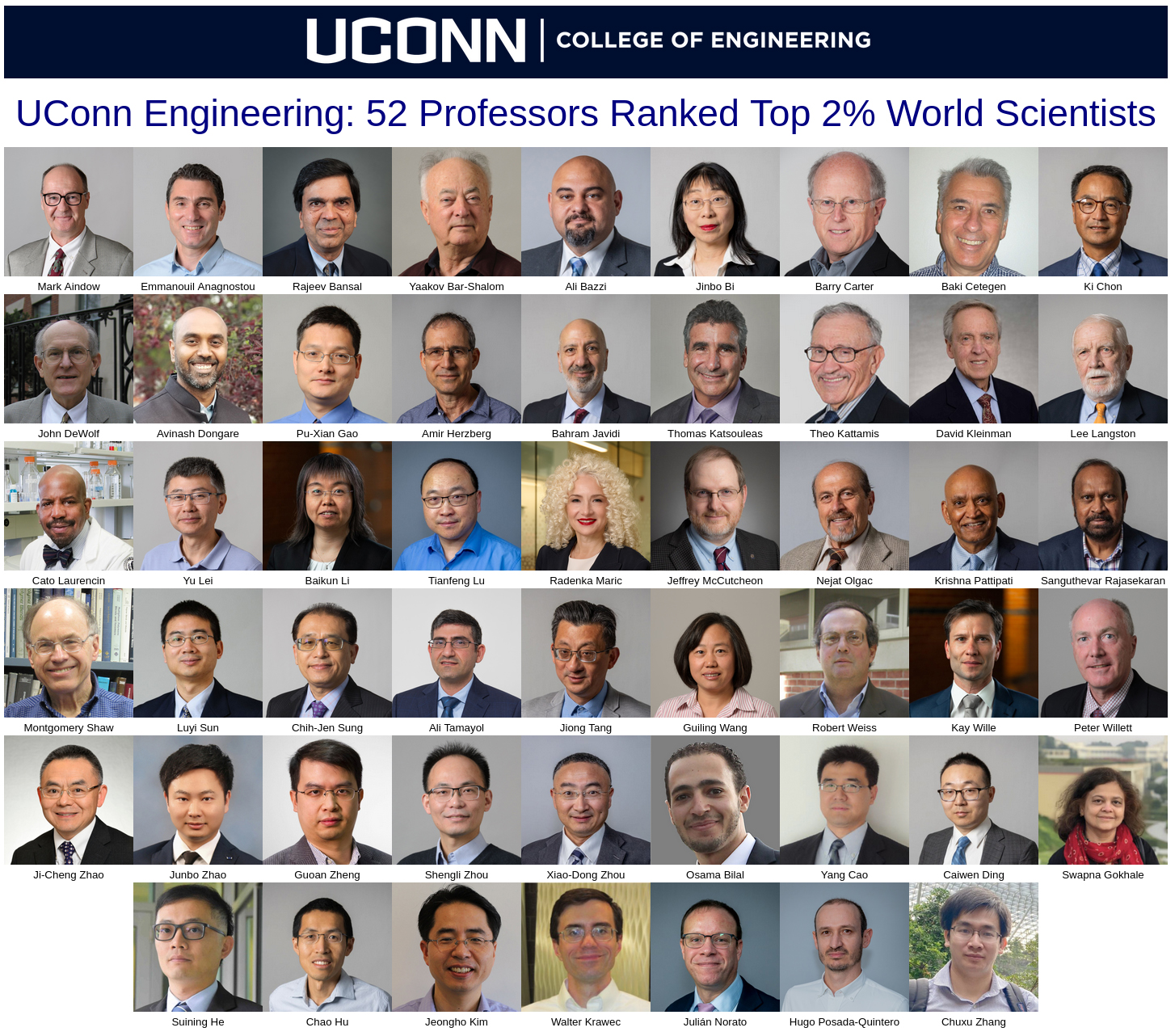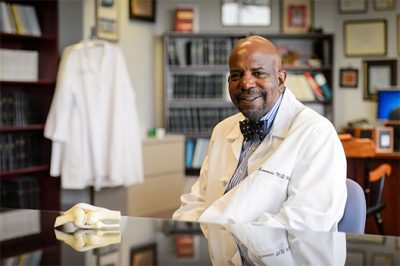from UConn Today
Fifty-two faculty members from the UConn College of Engineering have been recognized among the world’s top 2% of scientists in 2024, according to Stanford/Elsevier’s Top 2% Scientist Rankings. This annual ranking highlights the most widely cited researchers across diverse scientific disciplines, underscoring their significant contributions to research and their global impact. Half of those recognized are Institute of Materials Science (IMS) faculty members.
The top 2% career-long faculty members from UConn’s College of Engineering are: Mark Aindow, Emmanouil Anagnostou, Rajeev Bansal, Yaakov Bar-Shalom, Ali Bazzi, Jinbo Bi, C. Barry Carter, Baki Cetegen, Ki Chon, John DeWolf, Avinash Dongare, Pu-Xian Gao, Amir Herzberg, Bahram Javidi, Thomas Katsouleas, Theo Kattamis, David Kleinman, Lee Langston, Cato Laurencin, Yu Lei, Baikun Li, Tianfeng Lu, Radenka Maric, Jeffrey McCutcheon, Nejat Olgac, Krishna Pattipati, Sanguthevar Rajasekaran, Montgomery Shaw, Luyi Sun, Chih-Jen Sung, Ali Tamayol, Jiong Tang, Guiling Wang, Robert Weiss, Kay Wille, Peter Willett, Ji-Cheng Zhao, Junbo Zhao, Guoan Zheng, Shengli Zhou, and Xiao-Dong Zhou.
This recognition highlights the high caliber of UConn’s engineering faculty, whose research spans critical fields such as biomedical engineering, mechanical engineering, and chemical engineering. Their work not only advances academic knowledge but also offers innovative solutions to pressing global challenges in health care, energy, and materials science.

read the full story at UConn Today.
